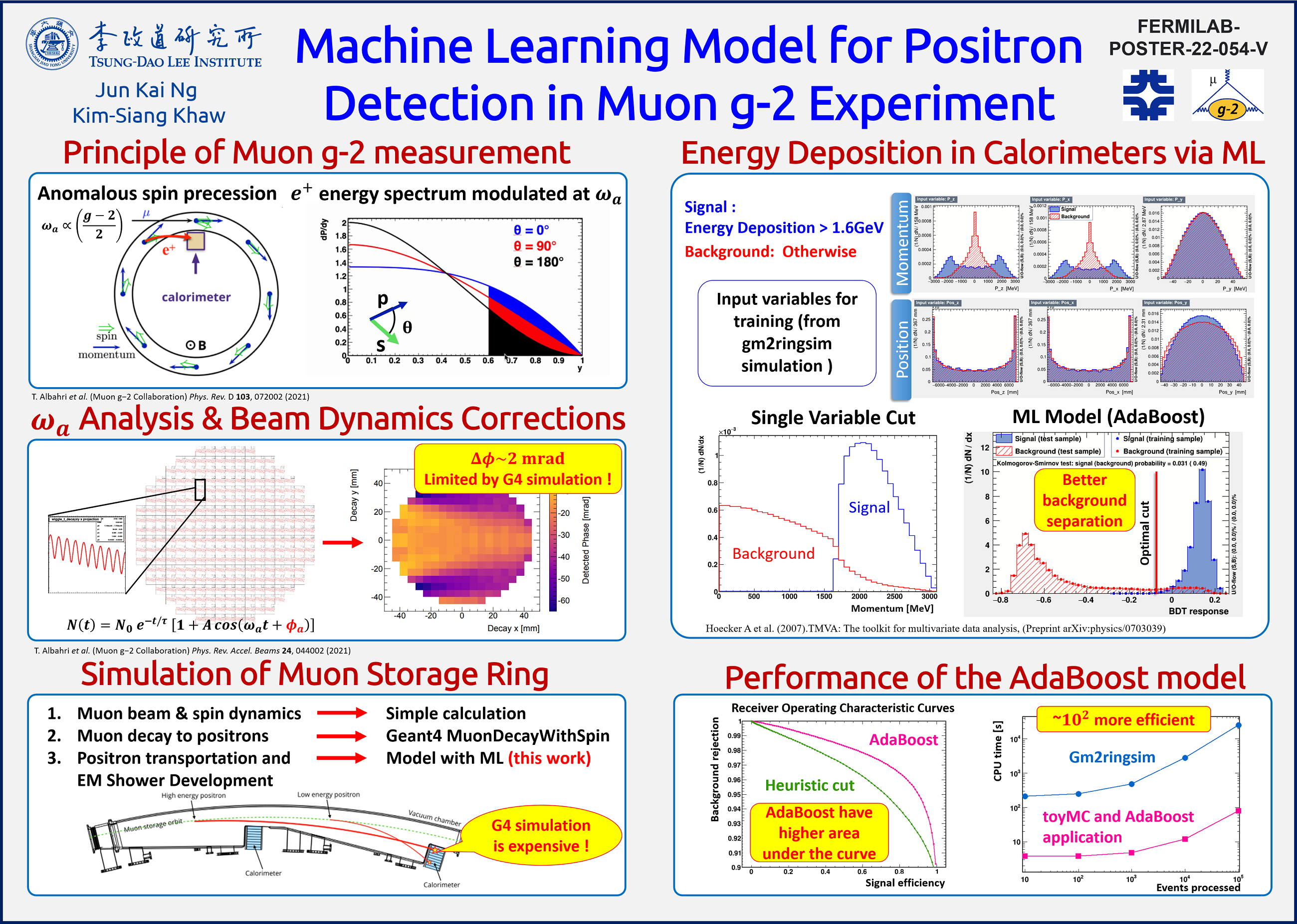Zoom Presentation Registration: https://fnal.zoom.us/j/94833851665?pwd=NUpLaDd5bUg0Yi8rN24rbGZjelFsQT09
A high-fidelity simulation is crucial in the study of systematic errors arising from beam dynamics and detector acceptance in the Muon g-2 experiment at Fermilab. Gm2ringsim, our current Geant4-based simulation package is computationally expensive and it has limited the amount of dataset that can be produced for various systematic studies. We propose a “divide and conquer” approach, where the typical Geant4 Monte Carlo simulation is divided into the beam and spin dynamics, muon decay, and positron detection. The last part which involves positron tracking and electromagnetic shower development in the calorimeter was modeled using time-efficient machine learning algorithms. In the first attempt, we trained an Adaptive Boosted Decision Tree (BDT) model to classify positron events according to the energy deposition. The performance of the model was compared with a heuristic variable cut approach. The model has a higher area under the Receiver Operation Characteristic (ROC) curve than the heuristic approach while maintaining high background rejection over a large range of signal efficiency. This demonstrates the potential of machine learning models for fast simulations.
We acknowledge support from the Fermi Research Alliance, LLC under Contract No. DE-AC02-07CH11359 with the U.S. DOE-OHEP. The authors are supported by the National Natural Science Foundation of China under Grant No. 12075151.
Return to Main Poster Presentation
To enlarge the poster, double-click on the image.

